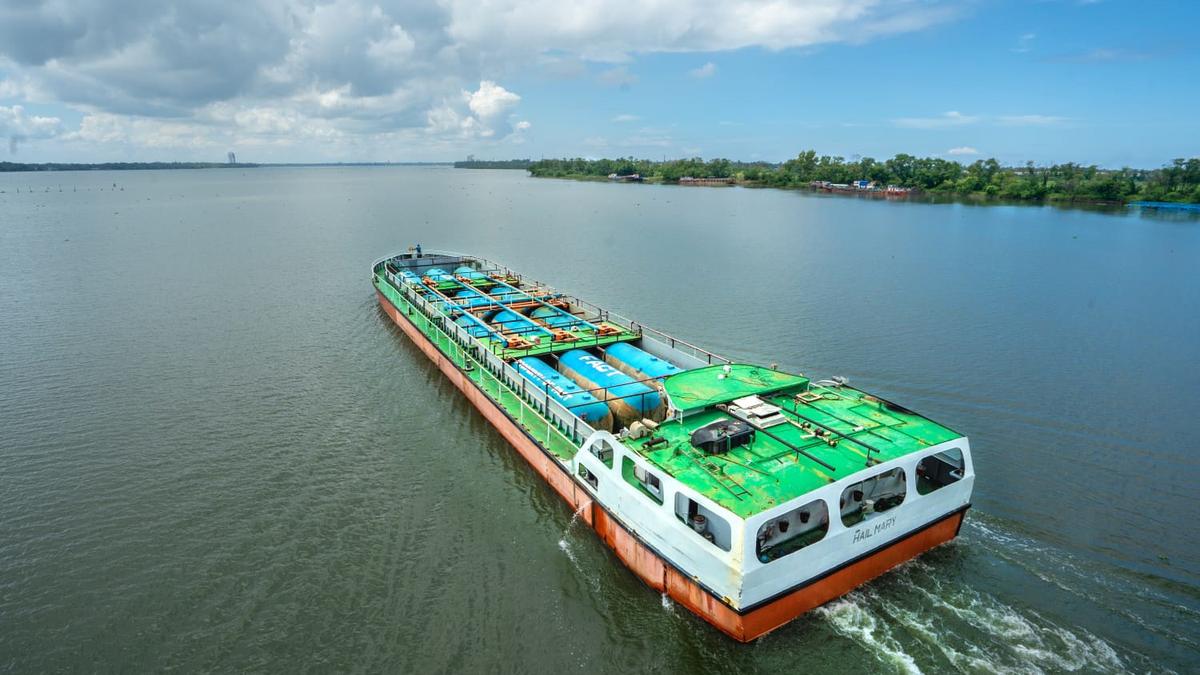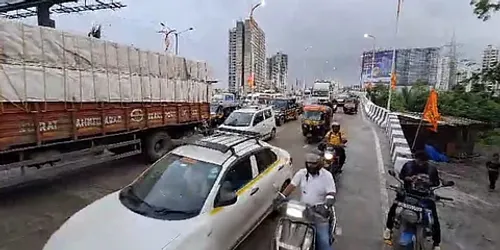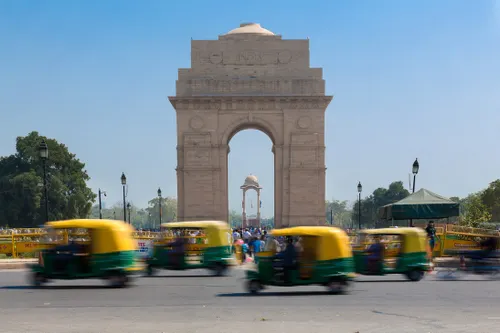
A barge ferrying ammonia passes through the National Waterway III in Kochi.
| Photo Credit: File Photo
The 205-km-long Kollam–Kottapuram National Waterway-III (NW-III) and its extension from Kottapuram to Kozhikode would considerably benefit from the new set of norms that open up the country’s inland water transport (IWT) sector to private participation.
This finds mention in the National Waterways (Construction of Jetties/Terminals) Regulations, 2025, formulated by the Inland Waterways Authority of India (IWAI). The authority operates under the Ministry of Ports, Shipping and Waterways (MoPSW). Both IWAI officials and other stakeholders in the sector said this would help attract private investment in setting up terminals and usher in the efficient use of water transport, a hitherto neglected sector.
“Private participation would catalyse the shift of cargo transport from roads and rail to waterways in a phased manner. Roping in private players will help develop business opportunities and attract tourism players into the sector. Ultimately, this would help make optimal use of NW-III,” said A. Selvakumar, director of IWAI’s regional office in Kochi.
The new regulations for the establishment and operation of jetties and terminals by various entities, including private, public, and joint ventures on national waterways across the country, would help enhance infrastructure development and improve the ease of doing business. They open up new opportunities for investment, trade, and economic growth, while also improving logistical efficiency. This would considerably reduce transportation costs, streamline the movement of bulk cargo, and support the overall growth of the IWT, official sources said.
As per the new norms, permanent terminals can be maintained for their lifetime by the operator, while temporary terminals will have an initial five-year term, with the possibility of extensions. The terminal developer and operator will be responsible for the technical design and construction.
Maintenance dredging
On concerns raised by stakeholders about the lack of a minimum two-metre depth of NW-III in Kerala, Mr. Selvakumar said that periodic maintenance dredging is done to ensure the waterway has this depth.
“An exception could be the corridor south of Thrikunnapuzha lock, where the government is building a lock gate. But there is no doubt that the movement of bulk cargo ought to shift from congested and polluted roads and highways to Kerala’s inland waterways, which were used to transport agricultural and other commodities until tarred roads were built. Awareness programmes ought to be conducted, since the nine terminals on NW-III are underutilised.”
Expressing concern at the next-to-nil patronage of the nine terminals, Neelakandan Unni, who had served as director of IWAI’s Kochi regional office, sought speedy measures to invigorate NW-III. “The idling terminals are proof that all is not well with the waterway, especially its depth. Most places do not have depth for barges and other cargo vessels of reasonable size. Private participation would, however, find takers in the form of operators of resorts and other tourism ventures located beside the waterway, who will be permitted to build boat jetties,” he added.
A prominent tourism stakeholder said the completion of the Thrikunnapuzha lock and Kovilthottam bridge at Chavara held the key to reviving NW-III, which is part of the 205-km Kollam–Kottapuram stretch of the West Coast Canal, whose revised deadline for completion is the end of 2025.
Published – April 28, 2025 01:04 am IST
Anurag Dhole is a seasoned journalist and content writer with a passion for delivering timely, accurate, and engaging stories. With over 8 years of experience in digital media, she covers a wide range of topics—from breaking news and politics to business insights and cultural trends. Jane's writing style blends clarity with depth, aiming to inform and inspire readers in a fast-paced media landscape. When she’s not chasing stories, she’s likely reading investigative features or exploring local cafés for her next writing spot.






